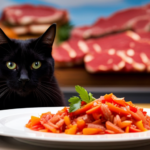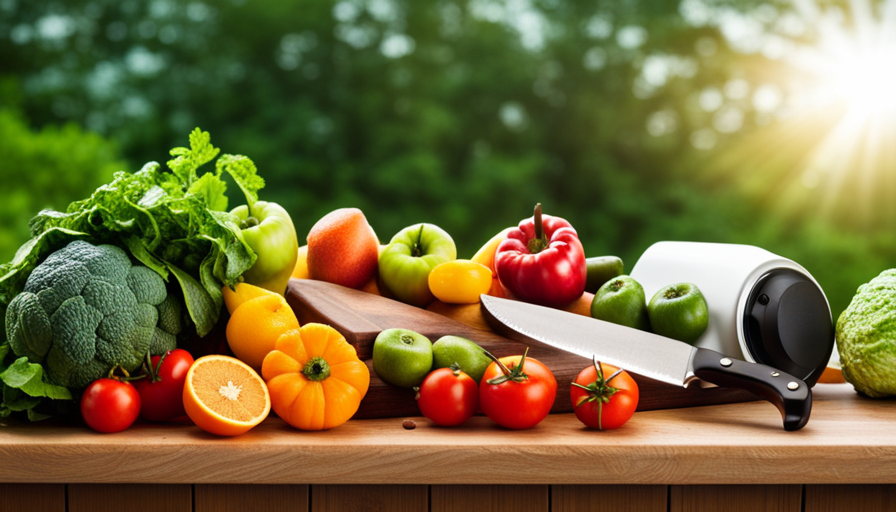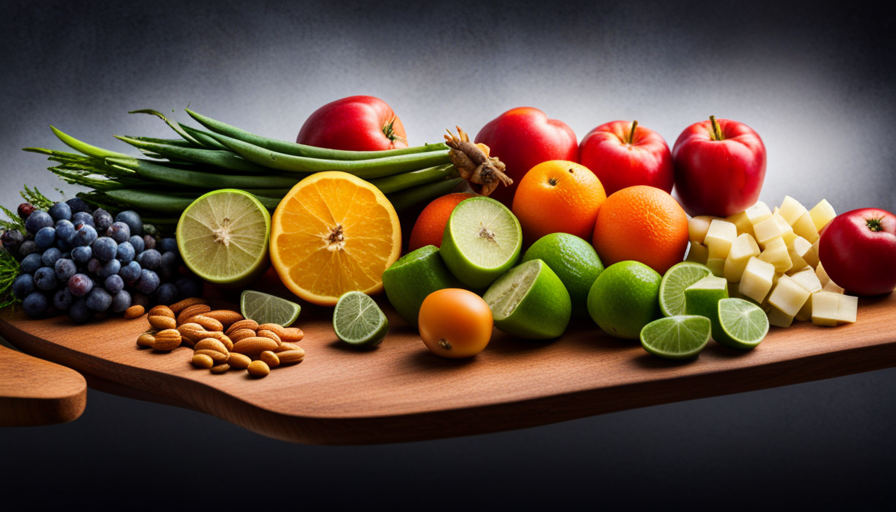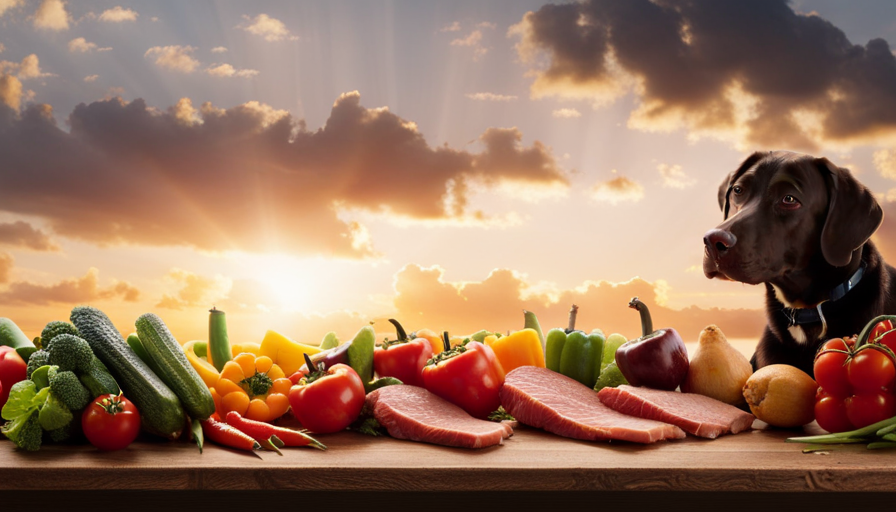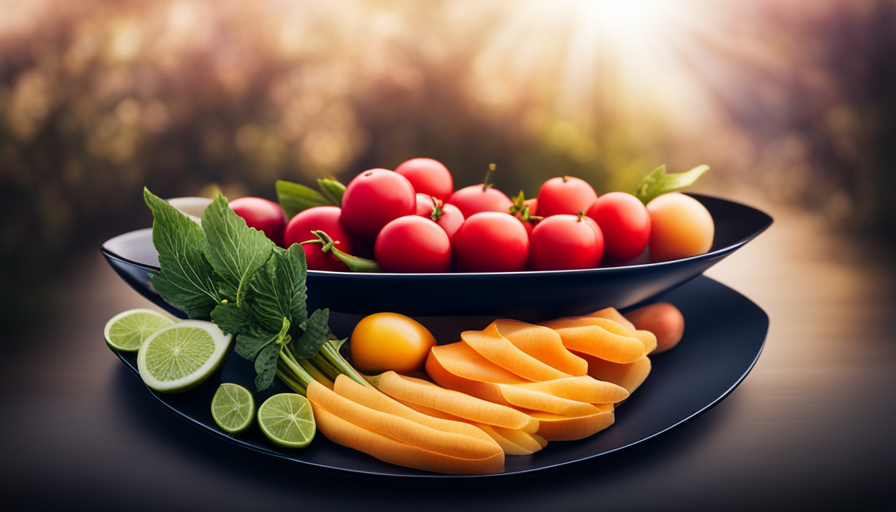Picture a scenario in which your feline companion’s food closely resembles what they would consume in their natural habitat – a diet that is authentic, wholesome, and rich in essential nutrients.
Sounds intriguing, doesn’t it? Well, that’s exactly what a raw food diet for cats aims to achieve. Raw food diets have gained popularity among cat owners who want to provide their feline companions with a more species-appropriate meal plan.
But is raw food really good for cats? In this article, we will explore the benefits, risks, and concerns associated with feeding cats a raw food diet. We will also discuss how to transition your cat to this type of diet and the various raw food options available.
By understanding the specific nutritional needs of cats and considering their individual preferences, we can make an informed decision about what is best for their overall health and well-being.
So let’s dive in and explore the raw food diet for cats!
Key Takeaways
- Raw food diets for cats aim to mimic their natural diet in the wild and promote better digestion and nutrient absorption.
- However, raw food diets can pose risks such as bacterial contamination and nutritional imbalance, which can lead to digestive issues and deficiencies in essential nutrients.
- Transitioning to a raw food diet should be done gradually with monitoring, and consultation with a veterinarian is important to ensure a customized plan that meets the cat’s nutritional needs.
- Alternatively, a cooked food diet can be considered as it eliminates potential pathogens and is easier to digest.
Understanding a Cat’s Natural Diet
Did you know that understanding a cat’s natural diet is crucial to providing them with the best nutrition possible? Cats are obligate carnivores, which means their bodies are designed to eat a diet primarily composed of meat. In the wild, cats hunt and consume raw meat, bones, and organs, which provide them with essential nutrients such as protein, vitamins, and minerals. By replicating this natural diet, we can ensure that our cats receive the optimal nutrition they need to thrive.
There are several benefits of feeding cats a raw food diet. First, raw food closely resembles what cats would eat in the wild, promoting better digestion and nutrient absorption. This can lead to improved overall health and a reduced risk of certain diseases. Additionally, a raw food diet can help maintain a healthy weight in cats, as it is naturally low in carbohydrates and high in protein. It can also improve dental health by reducing plaque and tartar buildup.
Transitioning into the next section, a raw food diet for cats offers numerous advantages that contribute to their overall well-being.
Benefits of a Raw Food Diet for Cats
Imagine how incredible it would be for your feline friend to experience the sheer magnificence of a diet that brings out their wildest instincts and nourishes them with the utmost purity. A raw food diet can provide exactly that, offering numerous benefits for your cat’s health and well-being.
Understanding a cat’s digestion is crucial when considering their dietary needs. Cats are obligate carnivores, meaning they require a diet primarily composed of animal protein. Raw food diets mimic their natural prey, consisting of raw meat, bones, and organs. This type of diet is easily digestible for cats, as their digestive system is designed to process raw food efficiently.
The importance of balanced nutrition cannot be emphasized enough. Raw food diets for cats can provide a wide range of essential nutrients, including amino acids, fatty acids, vitamins, and minerals. These nutrients are necessary for maintaining a healthy immune system, promoting optimal organ function, and supporting healthy skin and coat.
Additionally, a raw food diet can help prevent certain health issues commonly seen in cats, such as obesity and dental problems. The chewing and tearing of raw meat and bones can help keep their teeth clean and strong, reducing the risk of dental disease.
Transitioning into the subsequent section about potential risks and concerns, it’s important to consider that while a raw food diet can offer numerous benefits, it isn’t without its potential risks and concerns.
Potential Risks and Concerns
When it comes to feeding cats a raw food diet, there are potential risks and concerns that need to be addressed. Bacterial contamination is a major concern, as raw meat can carry harmful bacteria such as Salmonella and E. coli that can pose health risks to both cats and their owners.
Another concern is nutritional imbalance, as it can be challenging to provide all the necessary nutrients in the right proportions when feeding a raw food diet.
Lastly, potential choking hazards can occur if bones or large chunks of meat are given to cats, as they can be difficult to chew and swallow.
Bacterial Contamination
Feeding raw food to cats can expose them to potential bacterial contamination, putting their health at risk. Raw meat, especially poultry, can be contaminated with harmful bacteria such as Salmonella and E. coli, which can cause serious illnesses in cats. These bacteria can be transmitted to humans as well, making it a potential health concern for the entire household.
To illustrate the risks of bacterial contamination, consider the following table:
| Bacteria | Symptoms in Cats | Symptoms in Humans |
|---|---|---|
| Salmonella | Vomiting, diarrhea, fever | Nausea, abdominal cramps, diarrhea |
| E. coli | Diarrhea, abdominal pain | Diarrhea, urinary tract infections |
It is important to note that cats have a higher tolerance for some bacteria than humans, but they can still suffer from severe health implications. Therefore, it is crucial to handle raw food properly and ensure thorough cleaning to minimize the risk of bacterial contamination. In the next section, we will explore the potential nutritional imbalance associated with raw food diets for cats.
Nutritional Imbalance
A potential downside of feeding cats a raw diet is that it may lead to a lack of essential nutrients, which can negatively impact their overall health and well-being. While raw food enthusiasts argue that it provides a more natural and species-appropriate diet, there is a risk of nutritional deficiencies. Cats require certain vitamins, minerals, and amino acids that may not be adequately provided by a raw diet alone.
Additionally, the balance of nutrients in raw food can be inconsistent, making it difficult to ensure cats are receiving all the necessary nutrients. Moreover, some raw diets may cause digestive issues in cats, such as diarrhea or constipation. Therefore, it is important to carefully consider the nutritional adequacy of raw diets and consult with a veterinarian to address any potential deficiencies or digestive problems.
Moving on to potential choking hazards, it is crucial to be aware of the risks associated with feeding cats certain types of raw food.
Potential Choking Hazards
Be careful, you don’t want your furry friend to gulp down something that might get stuck in their throat and leave you frantically performing feline Heimlich maneuvers.
When considering a raw food diet for your cat, it’s important to be aware of potential choking hazards. Raw food can come in larger chunks or contain bones, both of which can pose a risk. Choking prevention is crucial, and knowing how to perform the Heimlich maneuver on cats is essential in case of an emergency.
Transitioning your cat to a raw food diet requires careful consideration of their individual needs and preferences. Gradually introducing small portions and monitoring their response can help ensure a smooth transition. It’s important to consult with your veterinarian to create a customized plan that meets your cat’s nutritional requirements.
Transitioning Your Cat to a Raw Food Diet
When switching your cat to a raw food diet, it’s important to take it slow and gradually introduce the new food. This transitioning process is crucial to ensure your cat adjusts well and avoids any digestive issues. Contrary to common misconceptions, cats can transition to a raw food diet successfully with the right approach.
Here are a few key steps to help you transition your cat:
-
Start by mixing a small amount of raw food with their regular diet. Gradually increase the proportion of raw food over a period of 7-10 days.
-
Monitor your cat’s appetite and stool consistency during the transition. Any significant changes should be addressed by consulting with a veterinarian.
-
Offer a variety of proteins to provide a balanced diet. This can include poultry, fish, and organ meats.
-
Consider adding supplements like omega-3 fatty acids and taurine to ensure your cat receives all the necessary nutrients.
Transitioning your cat to a raw food diet requires patience and close observation. Once your cat has successfully adjusted, you can explore different raw food diet options for cats.
Raw Food Diet Options for Cats
One popular option for feline nutrition is the BARF diet, which stands for Biologically Appropriate Raw Feeding. This type of diet involves feeding cats raw meat, bones, and organs, mimicking what they would eat in the wild. Proponents of the BARF diet believe that it provides several benefits for cats.
Raw food is said to be more nutrient-dense and easier to digest compared to processed commercial cat food. It can contribute to a healthier coat, improved dental health, and better overall immune function. Additionally, raw food may help prevent obesity and reduce the risk of certain diseases such as diabetes and urinary tract issues.
However, it is important to consider the safety of feeding raw food to cats. Raw meat can contain harmful bacteria like Salmonella or E. coli, which can pose a risk to both cats and their human family members. It’s crucial to handle raw food safely, following proper hygiene practices to minimize the risk of bacterial contamination. Additionally, it’s essential to ensure a balanced diet by including all necessary nutrients in the appropriate proportions.
To ensure that your cat’s nutritional needs are met and to address any potential risks, it’s important to consult with your veterinarian before transitioning to a raw food diet.
Consult with Your Veterinarian
Before making any changes to your feline’s diet, it’s crucial to consult with your veterinarian to ensure their specific nutritional needs are being met. Your vet will be able to provide tailored recommendations based on your cat’s age, weight, and overall health.
Here are some key points to consider when discussing a raw food diet with your veterinarian:
-
Nutritional Balance: Your vet will help you ensure that the raw food diet you choose provides all the necessary nutrients for your cat’s optimal health. They will make sure that the diet includes the right balance of proteins, fats, carbohydrates, vitamins, and minerals.
-
Safety Concerns: Raw food diets can pose risks, such as bacterial contamination and nutrient imbalances. Your vet can guide you on proper food handling, preparation, and storage to minimize these risks and keep your cat safe.
-
Individual Needs: Every cat is unique, and what works for one may not work for another. Your vet will take into consideration any specific health conditions or dietary restrictions your cat may have and make appropriate recommendations.
Consulting with your veterinarian is essential to ensure that your cat’s nutritional needs are met on a raw food diet. Once you have their recommendations, you can move on to monitoring your cat’s health on this diet.
Monitoring Your Cat’s Health on a Raw Food Diet
Once you’ve taken the leap into the world of feeding your feline friend a raw diet, you’ll want to keep a close eye on their overall well-being. Monitoring your cat’s health is crucial to ensure they’re thriving on this new diet.
One important aspect to consider is your cat’s weight. Just like with any diet, it’s essential to monitor their weight regularly. If your cat’s gaining or losing weight excessively, it may be necessary to adjust the portion size of their raw food meals.
Additionally, some cats may require supplements when on a raw food diet. While raw food provides many essential nutrients, certain supplements like omega-3 fatty acids or taurine may need to be introduced to ensure your cat’s nutritional needs are met. Consulting with your veterinarian will help determine which supplements, if any, are necessary for your cat.
Transitioning to a raw food diet can be a big change for your cat, but it’s important to explore alternatives as well.
Alternatives to a Raw Food Diet
When it comes to feeding our cats, a raw food diet may not be suitable for every feline. While it does have its benefits, such as providing essential nutrients and enzymes, some cats may not tolerate it well or may have health conditions that require alternative options. Therefore, it’s important to explore alternatives to a raw food diet that can still meet our cat’s nutritional needs.
One alternative to consider is a cooked food diet. Cooking the food can help eliminate potential pathogens and parasites that may be present in raw meat. Additionally, cooking can make the food easier to digest for cats with sensitive stomachs. Cooked diets can be prepared at home using recipes specifically formulated for cats or purchased as commercially available cooked cat food.
To better understand the differences between raw and cooked food diets, let’s take a look at this comparison table:
| Raw Food Diet | Cooked Food Diet |
|---|---|
| High in enzymes and nutrients | Eliminates potential pathogens |
| Mimics a cat’s natural diet | Easier to digest for sensitive stomachs |
| Requires careful handling and preparation | Convenient and ready to serve |
Considering your cat’s individual needs and preferences, it’s important to explore these alternatives and choose the best option for their health and well-being.
Considering Your Cat’s Individual Needs and Preferences
Take into account your feline companion’s unique requirements and preferences in order to determine the most suitable dietary option for their overall health and satisfaction. When considering your cat’s individual needs and preferences, it’s important to take their appetite into consideration. Some cats may have a picky palate and may not enjoy certain types of food, while others may have a voracious appetite and be willing to try anything.
Additionally, some cats may have dietary restrictions due to health conditions or allergies. It’s essential to consult with your veterinarian to identify any specific dietary needs or restrictions your cat may have.
Understanding your cat’s appetite and dietary restrictions can help you make an informed decision about their diet. By considering their individual preferences and needs, you can choose a diet that won’t only satisfy their hunger but also provide them with the necessary nutrients for optimal health.
Making an informed decision for your cat’s diet involves considering their unique requirements and finding a balance that meets their needs and preferences.
Making an Informed Decision for Your Cat’s Diet
After considering your cat’s individual needs and preferences, it’s important to make an informed decision regarding their diet.
When it comes to cat nutrition, one option that’s gained popularity in recent years is feeding cats a raw food diet. Many cat owners believe that raw food offers several benefits for their feline companions.
Raw food proponents argue that it closely mimics what cats would eat in the wild, as they’re obligate carnivores and thrive on a diet rich in meat. They claim that feeding cats raw food can lead to improved digestion, healthier skin and coat, increased energy levels, and even a reduced risk of certain diseases.
Supporters of raw food diets for cats also argue that it can help with weight management and prevent obesity. Since raw food typically contains fewer carbohydrates than dry or canned food, it can be a good option for overweight or diabetic cats.
However, it’s important to note that there’s limited scientific research on the benefits of raw food diets for cats. Some veterinarians express concerns about the potential risks, such as bacterial contamination or nutritional imbalances. It’s essential to consult with your veterinarian before making any changes to your cat’s diet to ensure that it meets their specific nutritional requirements.
Frequently Asked Questions
How do I know if my cat is not tolerating a raw food diet well?
If your cat isn’t tolerating a raw food diet well, there are several signs to look out for. These may include digestive issues such as vomiting, diarrhea, or constipation. Other signs could include a decrease in appetite, weight loss, or skin problems. It’s important to note that transitioning to a raw food diet can pose common challenges for cats, as their digestive systems may take time to adjust. If you notice any of these signs, it’s best to consult with your veterinarian for guidance.
Can I feed my cat a combination of raw and commercial cat food?
Combining raw and commercial cat food can be a good option, but it’s important to consider both the pros and cons.
One interesting statistic is that 90% of cats on a raw food diet have shown improved coat condition.
Some benefits of combining include convenience and ensuring a balanced diet.
However, it’s crucial to transition gradually to prevent digestive issues. Start by mixing small amounts of raw food with commercial food and gradually increase the ratio over time.
Remember to consult with your veterinarian for personalized advice.
Are there any specific supplements I need to add to my cat’s raw food diet?
When considering a raw food diet for your cat, it’s important to ensure they’re getting all the necessary nutrients. Supplement options for a raw food diet can include fish oil for omega-3 fatty acids, vitamin E for antioxidant support, and taurine for heart health. These supplements help meet a cat’s nutrient requirements and maintain their overall wellbeing.
It’s crucial to consult with a veterinarian to determine the specific needs of your cat and to ensure a balanced and complete diet.
How long does it usually take for a cat to transition to a raw food diet?
The transitioning process to a raw food diet for cats can vary depending on the individual cat. It typically takes about 1-2 weeks for most cats to fully transition. However, some cats may take longer, especially if they’re picky eaters or have a sensitive digestive system.
Common challenges during this process include initial refusal of the new food, digestive upset, and potential nutrient imbalances. It’s important to monitor your cat’s health and consult with a veterinarian during the transition.
Are there any alternative diets that can provide similar benefits to a raw food diet for cats?
There are alternative diet options that can provide similar benefits to a raw food diet for cats. One option is a high-quality commercial wet food that’s grain-free and rich in animal proteins.
Another option is a cooked homemade diet that includes lean meats, vegetables, and supplements. However, it’s important to note that these alternative diets may have potential drawbacks, such as the risk of nutrient imbalances or the need for careful meal planning.
Is a Raw Food Diet Safe and Healthy for Cats as Well?
Many experts believe that a raw food diet health implications for cats include potential benefits such as improved digestion, healthier coat, and increased energy. However, it is essential to consult with a veterinarian before making any changes to your pet’s diet to ensure it is safe and balanced.
Conclusion
In conclusion, after careful consideration and research, I’ve come to the realization that a raw food diet can indeed be beneficial for cats. Just like a lion thrives in the wild, our feline friends can thrive on their natural diet.
However, it’s crucial to monitor their health and consult with a veterinarian. While alternatives exist, such as commercial cat food, it’s important to remember that each cat is unique.
Ultimately, the decision lies in our hands to provide the best nourishment for our beloved companions.



